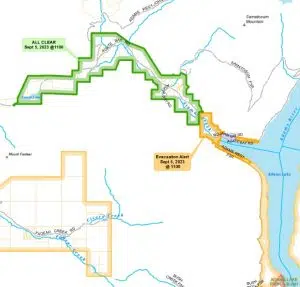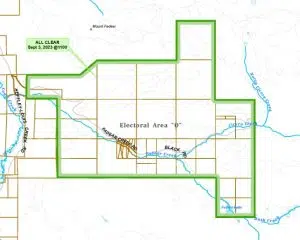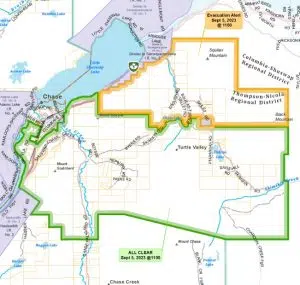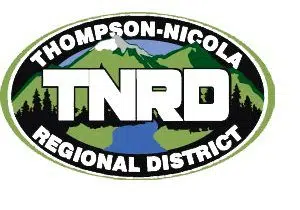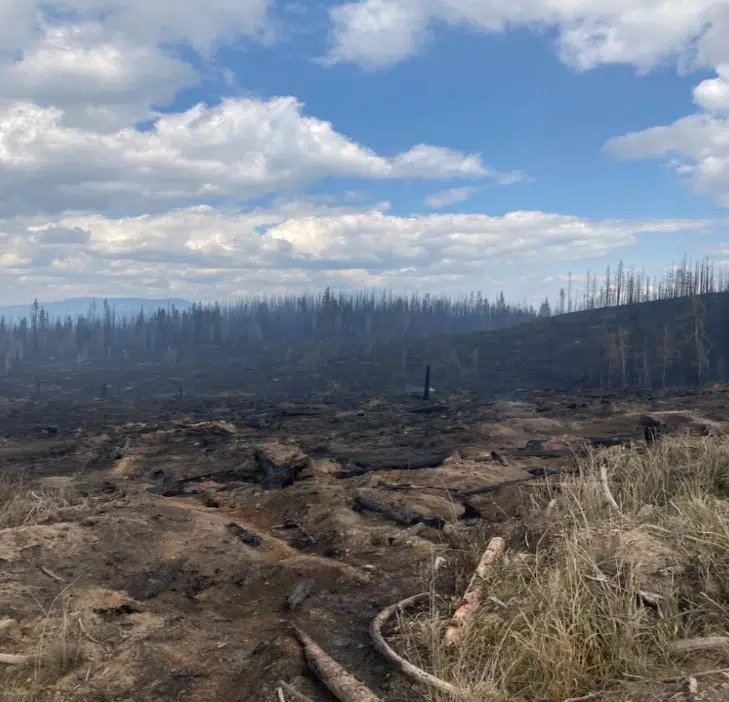
A look at some of the area charred by the Bush Creek East wildfire. (Photo via BC Wildfire Service)
The Thompson-Nicola Regional District has downgraded some evacuation alerts in the Adams Lake and Shuswap areas that were put in place due to the Bush Creek East fire.
A dozen properties in the Fadear Creek area – that were put on alert back on July 23, when the Bush Creek East Fire was an estimated 380-hectares in size – have been given the all-clear.
The TNRD has also lifted an evacuation alert for 49 properties in the Agate Bay area, leaving 36 others still on alert. The properties taken off alert are in the vicinity of Agate Bay Road, west of Agate Bay itself to Forest Lake, as pictured here.
Evacuation alerts were also lifted for 207 properties in Turtle Valley, with about 57 properties in the area located between Chase and Sorrento still on evacuation alert, as pictured here.
No properties in the areas taken off evacuation alert Tuesday were damaged or destroyed by the fire, which is now an estimated 431 square kilometres – 43,084 hectares – in size after it merged with the former Lower East Adams Lake fire on Aug. 18.
A total of 85 properties in Agate Bay were put on evacuation alert back on Aug. 7, while all 264 in the Turtle Valley area were put on alert when the final evacuation order was rescinded on Aug. 30.
This rescinding of these evacuation alerts comes as the Columbia-Shuswap Regional District plans to downgrade evacuation orders in North Shuswap and Adams Lake area on Wednesday, Sept. 6.
The CSRD says residents in the Lower East Adams Lake area will have to return between 7 p.m. and 7 a.m., as Holding Road – which is also the main point of access for TNRD properties in the Adams Lake area – will be closed to public access between 7 a.m. and 7 p.m., to allow BC Hydro crews to work on restoring power
The TNRD expects that its final evacuation order – that covers 75 properties in the South Adams Lake area – could be lifted tomorrow, Sept. 6. Last month, it said there were nine properties south of the Adams Lake ferry terminal that had some kind of structural impacts.
For the latest on evacuation orders and alerts from the TNRD, go here.
For the latest from the CSRD, go here.
- A look at the Agate Bay area properties taken off evacuation alert on Sept. 5. (Photo via TNRD)
- A look at the Fadear Creek area properties taken off evacuation alert on Sept. 5. (Photo via TNRD)
- A look at the Turtle Valley area properties taken off evacuation alert on Sept. 5. (Photo via TNRD)





